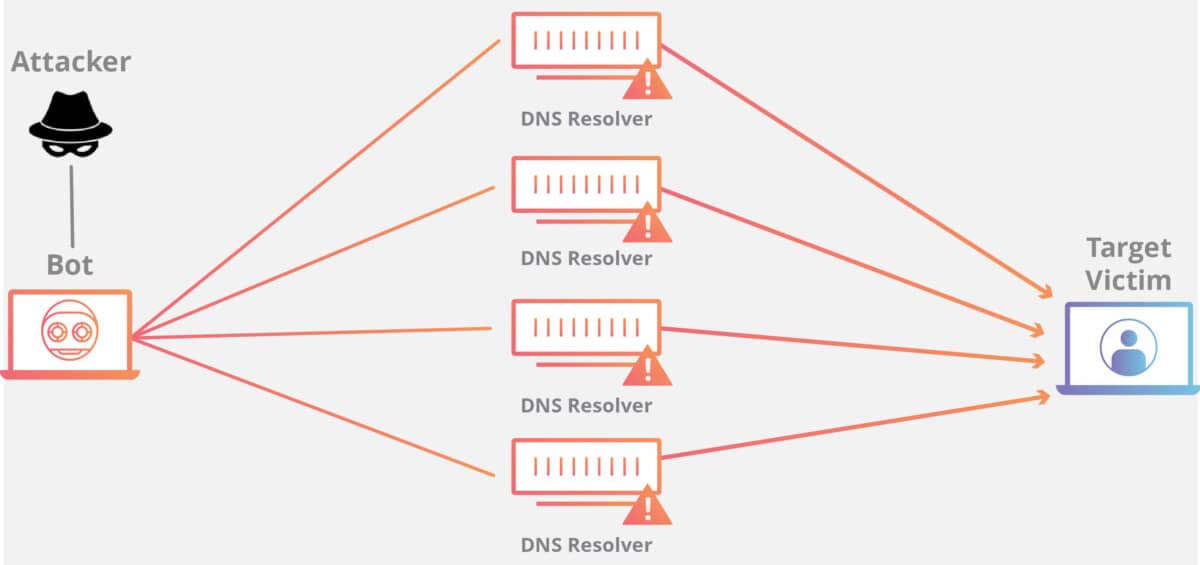
What is a DDoS Attack?
A distributed denial-of-service (DDoS) attack is a malicious attempt to disrupt normal traffic of a targeted server, service or network. What happens is a suspicious subject compromises vulnerable infrastructures, or easily exploited computers from anyone and uses those machines to target a point of interest as depicted in the image. Exploited machines can include computers and other networked resources such as IoT devices. Another way at looking at a DDoS attack is like a banana being stuck into a tail pipe and preventing a vehicle from breathing. Consequently, the vehicle can shut down and no longer operate.
How Exactly does a DDoS attack work?
The subject aiming to do damage will compromise other machines and networks and turn those into his worker bots, thereby taking control on the infrastructure and using all of them at one time to target a machine that he aims to bring down. This is essentially called a botnet. That is, all of the compromised machines become his army of deterring bots and they are used to attack like an army of troops.
Why would someone want to do this?
A number of reasons could explain why a person would want to go through so much to compromise a vast array of machines in order to produce a botnet that consequently brings down a target of interest. But the number one thing that comes to my mind is that someone must be extremely bored, perhaps on the unhealthy side of life, or just wants to shut down aforementioned target because of some other idea of entertainment.
The Open Systems Interconnection (OSI) model
The International Organization for Standardization integrates the concept of many different communication devices all operating using the same standard networking protocols. The OSI enables standards for these diversified devices to efficiently communicate together. The OSI model is a conceptual framework used to describe network connectivity in 7 distinct layers: 1. Physical Layer 2. Data Link Layer 3. Network Layer 4.Transport Layer 5. Session Layer 6. Presentation Layer 7. Application Layer. DDoS attacks are often targeted at the Application Layer, which is the website itself layer sending a multitude of call to the servers IP address by sending a mass amount of traffic to a website page at once.
Can I protect myself from a DDoS attack as a website administrator?
Absolutely you can protect your website! A number of different safety measures as a website developer should be addressed based on what operating system is being used, what development platform being used such as s standalone HTML + CSS3 website with some other various coding based on your functional needs and presentation style desires. WordPress is a crowd favorite; however, Amazon is heading fast into the cloud world implementing a great set of features while partnering which GUI’s such as Plesk. A CDN (Content Delivery Network) service provides a strong layer of protections from DDoS attacks. According to Micro Trend, a Russian Underground research paper Micro Trend $150 could take down a whole data center infrastructure for a whole week, which could result in major turmoil for a company. Delivering your content from another server from which your server produces the application layer of your development is by far the best way to protect a system. That might in fact be the only way. There are other ways, however, to protect yourself such as using good firewall service.
Back-up, Back-up, Back-up
I always keep content backed up every day. This keeps hosted clients protected and enables them to be back up in running in the event an infrastructure or networked system is compromised. Back up your data!

Sorry, the comment form is closed at this time.